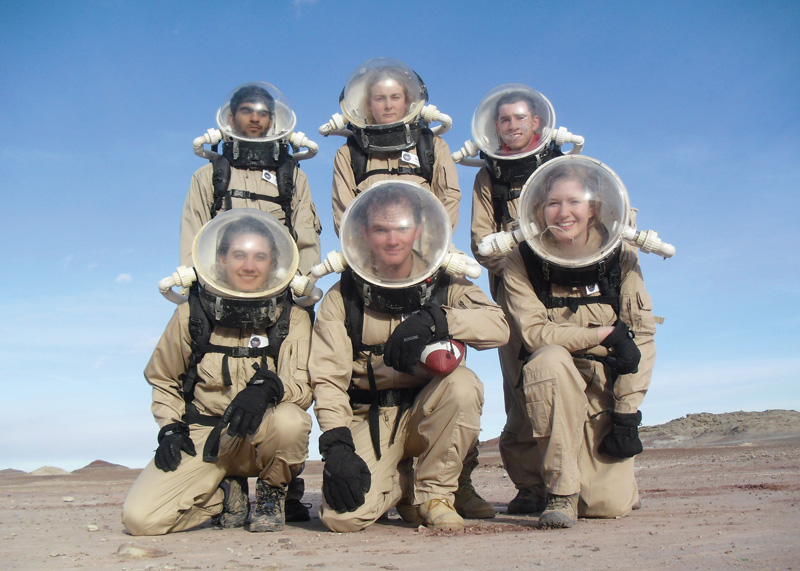Will Max Fagin Go to Mars?

Max Fagin ’10 describes himself as “a kid who went through the astronaut phase and never really grew out of it.” When he was 14 he spent most of his childhood savings on a telescope, and as a freshman at Vassar he wrote a paper outlining how Mars could someday be as habitable as Earth. Now pursuing a master’s degree in aerospace engineering at Purdue University, Fagin hopes to board a spaceship for a one-way journey there in 2024.
Fagin is one of 1,058 people—some of whom are scientists, many of whom are not—still in the running to be one of four astronauts on the first trip to Mars planned by Mars One, a private company founded in 2011 by Netherlands billionaire entrepreneur Bas Lansdorp.
More than 200,000 originally expressed interest in the project, and the list was pared down in December. Fagin says he’s not surprised he made the cut. He is a graduate of the Dartmouth-Thayer dual degree engin-eering program, receiving a bachelor’s degree in physics and astronomy from Vassar in 2010 and a bachelor’s in engineering from Dartmouth in 2011. His research at Purdue is on the design of a spacecraft large enough to carry people and supplies to Mars but small enough to make a soft landing once it arrives.
“It was gratifying to learn I’m still in the running,” he says. “The skill sets I’m building don’t qualify me to be a computer programmer or an automotive designer; they qualify me to work on a Mars mission.”
His activities since graduating from Vassar have been built around this goal. In 2011 he was part of a team selected for NASA’s Microgravity University, a program that offers students the chance to perform experiments in a space-like environment. And he spent more than a month at the Mars Desert Research Station (MDRS) in Utah, a simulated Mars-like environment operated by the Mars Society, a not-for-profit organization that promotes the benefits of Mars exploration.
Fagin embraced the privately funded Mars One project, since NASA doesn’t plan to send a crewed flight there until at least 2035. The firm has secured a commitment from two aerospace companies, Lockheed Martin and Surrey Satellite Technology, to develop plans for a robotic mission in 2018. The project will be principally funded by a reality television show chronicling the preparations for the trip to Mars, the astronauts’ eight-month journey, and their activities once they arrive.

“Who wouldn’t want to watch a show like that?” Fagin exclaims.
He’s convinced that we already have the technology to raise sub-zero temperatures on Mars to Earth-like levels and eventually create a breathable atmosphere—it’s a process, called “terraforming,” which Fagin described in a paper in his freshman writing seminar at Vassar for psychology professor Kenneth Livingston. The idea is that if greenhouse gases could be released to increase the temperature on Mars by four degrees Centigrade, then the frozen carbon dioxide at the planet’s south pole would begin to evaporate, spurring a greenhouse effect that would continue on its own.
“The last step would be the release of plant species that could survive the desert-like conditions of Mars,” Fagin wrote in his freshman essay.
“Breathing in the toxic carbon dioxide and emitting oxygen, they would slowly turn the atmosphere into one breathable by humans. Not bad for an initial investment of only four degrees.”
He argues that humans must eventually become interplanetary or go extinct. As for the safety of the mission, Fagin insists, “Mars is really no more extreme to modern humans than pre-colonial America was to the first European settler.” He accepts the level of danger and is fully prepared to spend the rest of his life on Mars once he gets there (launching a spacecraft for a return trip would be prohibitively expensive).
He envisions life on Mars as a constant act of exploration and innovation. “Such a life, even if dangerous, strikes me as highly desirable,” he says.
—Larry Hertz
